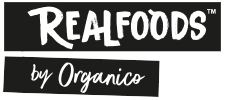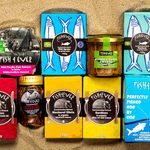You have no items in your shopping cart.
Every company has quality control processes and systems in place. Our quality charter is additional: it is our commitment to produce and supply the best always.
1. We will always buy the best.
Canned fish is a global industry with intense price competition. It means there is a huge pressure to find the cheapest possible fish and the cheapest possible production. We will always buy quality first, looking for small producers with a strong history and expertise, based in long established fishing communities. We shop for the story not the price. We visit all our suppliers in person.
By buying on quality before price we do not constantly go to the cheapest possible producer, playing one off against the other, but search for producers who have strong quality and sourcing ethics. We aim to establish long term supply relationships to help provide stability to our producers. By valuing quality, the message we send is simple but powerful – do things well and don’t cut any corners for us. For example we know of many canned sardines which still have scales in them or have not been well gutted. This will be to speed the process up and gain yield – but at the cost of quality and care. Sardines and mackerel can be fished at the wrong time when they have just eaten and their stomach is full so it is distended and will tear. We buy from the skippers that know when to fish. We select by size and buy in the season when the fat levels are higher and the fish more succulent. In tuna it is possible to scrape lesser parts of the fish off the bone and add that back into “chunks”, it is possible to dye the red parts of the meat and water can be injected into the chunks to expand the weight. All of these savings are routinely used in the highly competitive tuna industry. If your message as a buyer is “give me the cheapest price possible”, even if you separately have a quality control system, you are incentivising your suppliers to do things as cheaply as possible.
2. We will always use the shortest possible supply chain.
We have a MAXIMUM of 4 steps between the fish we put in a can and the boat that fished it. We do not trust long supply chains. Of course you can have a paperwork trace, in fact you have to, but our belief is simple: we want to be as close to the fish as possible.
We believe the more parties involved the more industrial and large scale your buying process is and the more it becomes a traded commodity rather than a valued food product. 2 steps is great – when you are able to land the fish straight into the factory from individual fishing boats or a fishing co-operative, but this isn’t always possible. Firstly, most fish is fished during a fishing season: it has a life/reproduction/feeding cycle leading to an appropriate fishing period. Secondly, it is not always possible for us to pack in a factory that is local to the fishing. In such cases freezing becomes a natural additional stage and specialist companies handle the stocking and freezing. This becomes a 3 or 4 step process. BTW we never use airfreight. An example of the 3 step process is Cornish sardines. Once these became plentiful, we wanted to support British boats fishing well, but there isn’t a sardine cannery in the whole of the UK, nor sufficient consistent supply. So in season, when we get the appropriate quality in fishing terms and size for canning, we buy Cornish sardines, these are then quick frozen in Cornwall and sent to a partner factory in Northern Spain. The 4 step process is similar to the 3 step process but one where there will be an export/freezer company and an import/freezer company involved.
3. We always fish locally and pack locally whenever possible.
We think fish should be fished by boats that are based close to the fish that is being fished. Our sustainability philosophy is also a quality of supply chain approach: we buy from local boats, registered in a local port, flying the flag of the country in which they are based, with as wide an ownership base as possible, with skippers who don’t sit in distant offices but go out to sea with their crew, legally managed by their local authorities and forming part of a local coastal community.
In production we have developed long terms relationships with key partners who share our quality and sustainability approach. For sustainability reasons we would prefer to support a factory based in the same location as the boats and the fish. This is not always possible – for quality control reasons or for relationship reasons, or for scale and volume reasons where a cannery is either too small for us and/or there is no local option available to us. All our production partners are relatively small scale artisan producers and family owned companies that do not form part of a large international group.
4. We always work from the whole fish.
In tuna, working from the whole fish in one movement guarantees a high quality product and supports good verification and traceability.
Tuna is a global industry with industrial fleets fishing in distant seas, often under different flags. The tuna is kept in vast holds out at sea and often transhipment boats that ferry the tuna to a factory are used so the fishing boat can stay fishing. In many cases the tuna is frozen at sea, which is good, but also caught in huge nets and over-stacked in the hold, which is bad. Net-fished tuna has fought hard in the net, leading to stress that changes the flavour of the meat. They will often be twisted and lacerated and then piled high on top of each other. Once landed the tuna is defrosted, butchered in a factory and then frozen and kept as loins. The loins are shipped to a factory thousands of miles away. It is these loins which are then defrosted and packed in a separate cannery. Freezing, defrosting and re-freezing means the nutritional quality of the tuna is reduced. Worse, it is hard to verify the origin of the tuna and a paper trail can be cheated. We know for a fact that there is over-claiming of ‘fake pole and line tuna’. This is why we insist on working directly from the whole tuna even though it is more expensive. We can visually verify the quality of the fish that comes into the factory and corroborate the fishing method claimed in a way that you cannot do with a frozen loin.

5. We only ever add natural and organic ingredients.
We only ever add natural and certified organic land ingredients. The organic system controls not only the inputs allowed on the land, which we believe do have negative health consequences, but also prohibits the use of a whole number of additives, preservatives and artificial or chemical processing aids. So the organic seal is a guarantee of the purity of the ingredients used. In the case of our vegetable oils we only use high quality virgin and first cold pressed oils: this is extremely rare in the canning industry where the cheapest oils are mostly preferred.
Organic agriculture rules ban the vast majority of pesticides (to kill pests), fungicides (to kill fungal growth) and insecticides (to kill insects), which are allowed in normal agriculture. Produce from non-organic agriculture will show higher amounts of toxic residues and although these are below the levels considered dangerous to health, there are often a whole number of different residues found in the same product AND ‘safe level tests’ are not conducted on the accumulation or cocktail effect of these residues. In addition Glysphosate, one of the most prevalent crop control pesticides, was defined as “probably carcinogenic” by the World Health Organisation in 2015! Synthetic fertilisers are also disallowed in organic agriculture. Organic methods encourage a healthy and rich soil with good levels of mineral content. There is sparse and contested evidence as to the nutritional difference between organic and conventional crops but in the case of vegetable oils for example the benefits are very clear: non organic methods extract the oil through chemical solvents and high heating, spoiling the structure and nutritional quality of the oil. Beyond this point we believe that there must be further benefits from an agriculture that respects the vitality of the soil and plants and a processing system where at every stage the natural quality of ingredients is preferred.













